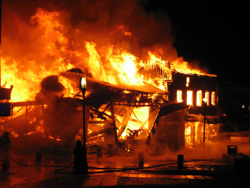Send in the robots for an emergency
Industrial sites — nuclear power plants, chemical facilities that manufacture inflammable and noxious materials, and oil refineries — are dangerous places to work. While health and safety standards in Europe are among the highest in the world, accidents can still happen. Large-scale industrial fires can result in fatalities, damage corporate assets and put the surrounding neighbourhood at risk. Often, regular firefighting vehicles and crew cannot gain access to the interior of an affected facility as it would put their lives at too great a risk. This is why an EU-funded project titled 'Autonomous firefighting robotic vehicle' (FIREROB) was launched. The project consortium aimed to develop an unmanned firefighting vehicle capable of operating in conditions where human intervention is impossible. The FIREROB robot is able to enter into the heart of a fire, navigate the area, recognise different objects, and remove flammable or dangerous materials. This has been made possible by the development of an effective multi-layered shield, which is used to protect the vehicle's body and to withstand violent explosions and shocks. A special coating was applied to enable the steel to withstand temperatures of 830 degrees Celsius for up to 30 minutes. Controlled remotely, the robot can be navigated within a range of 2 km, even in reduced visibility. A dynamic positioning system enables operators to pinpoint the vehicle with an accuracy of +/– 50 cm. This navigation system uses GPS algorithms. The vehicle is also equipped with video imaging technology to support operators. The system has a visible spectrum camera and an infrared spectrum camera. A wireless video link is used to transmit video signals to the remote station. Even in extreme temperature conditions, the video feeds work remarkably well. FIREROB technology has provided a practical solution for dealing with industrial accidents. This offers clear benefits to businesses, by providing a cost-effective and safer means of tackling dangerous fires.







